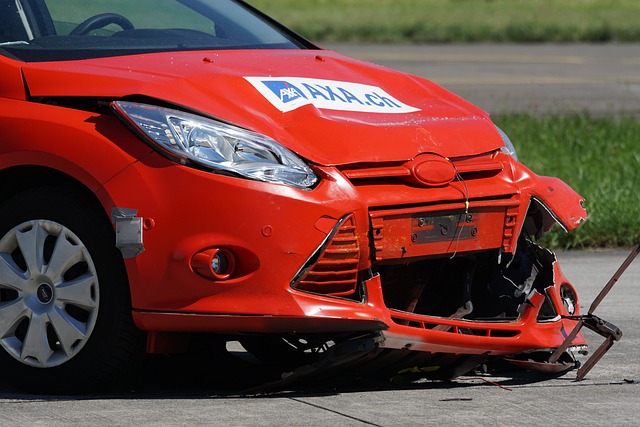Pedestrian Bus Accident Legal Fees: What to Expect in the Legal Process

Pedestrian bus accidents can lead to severe injuries and legal claims. Victims may sue bus companies…….
In an era where urban mobility is a paramount concern, the intersection of pedestrians and buses has become a critical area of focus. The term “pedestrian bus accident” encapsulates a complex set of issues, encompassing safety, infrastructure, and technology. This article aims to dissect this multifaceted topic, offering readers a holistic understanding of its impact, trends, and potential solutions. From global statistics to technological innovations, we will explore the various facets of pedestrian bus accidents and their implications for cities worldwide.
A pedestrian bus accident refers to any incident involving a pedestrian (a person traveling on foot) and a bus (a motor vehicle primarily designed for passenger transport). These accidents are not merely isolated events but rather complex phenomena influenced by a myriad of factors, including human behavior, infrastructure design, vehicle technology, and regulatory frameworks.
Key Components:
The historical context of pedestrian bus accidents reveals a long-standing challenge in balancing the needs of efficient public transportation with the safety of those who choose to walk. Over time, urban planning and technological advancements have aimed to mitigate these conflicts, yet many challenges remain.
Pedestrian bus accidents are not confined to specific regions; they occur worldwide, albeit with varying frequencies and outcomes. According to a study by the World Health Organization (WHO), road traffic crashes involving pedestrians account for approximately 5% of all global deaths. While this may seem relatively low, the impact on individual communities can be severe.
Regional Variations:
The economic implications of pedestrian bus accidents are far-reaching, impacting both public sector spending and private investments in urban transportation.
Market Dynamics:
Investment Patterns:
| Region | Key Investments | Examples |
|---|---|---|
| North America | Smart Traffic Management Systems | Real-time bus tracking, signal optimization |
| Europe | Pedestrian-Friendly Infrastructure | Raised crosswalks, dedicated pedestrian lanes |
| Asia | Integrated Transport Apps | Bus routing apps with real-time updates for pedestrians |
| Global | Crash Data Analysis Software | Tools to predict and prevent high-risk areas |
Technology plays a pivotal role in shaping the future of pedestrian bus safety. Innovations range from advanced vehicle systems to smart city solutions, each aiming to reduce accidents and improve overall mobility.
Significance of Technology:
Emerging Technologies:
Effective policies and regulations are essential to ensuring safe interactions between pedestrians and buses. Governments worldwide have implemented various measures to address this complex issue.
Key Policies:
Regulatory Frameworks:
Despite significant progress, pedestrian bus accidents continue to pose challenges, often rooted in complex urban dynamics. Addressing these issues requires a multi-faceted approach.
Main Challenges:
Proposed Solutions:
Real-world examples offer valuable insights into the successful integration of pedestrian bus safety measures. These case studies demonstrate innovative solutions and their impact.
Case 1: Amsterdam, Netherlands – Pedestrian-Friendly Urban Design
Amsterdam’s comprehensive approach to urban design has transformed the city into a model for safe pedestrian-bus interactions. The city’s wide sidewalks, dedicated bike lanes, and well-designed intersections minimize conflicts between pedestrians and buses. Integrated traffic signals prioritize pedestrian crossings, ensuring safe passage. This holistic planning has resulted in significantly lower accident rates and a thriving culture of walkability.
Case 2: Copenhagen, Denmark – Sustainable Transport Systems
Copenhagen’s focus on sustainable transportation has led to innovative solutions like the “Super Block” concept, where blocks are closed to motor traffic, creating safe, pedestrian-only zones. Buses operate on dedicated lanes, ensuring efficient and conflict-free travel. This model has not only reduced accidents but also fostered a sense of community and improved air quality.
Case 3: Tokyo, Japan – Smart Traffic Management
Tokyo’s complex public transport network includes advanced traffic management systems. Real-time data from sensors and cameras optimize bus routes and signals, reducing congestion and wait times. Pedestrians benefit from efficient crossing times, while buses maintain predictable schedules, minimizing accidents.
The future of pedestrian bus safety is characterized by technological advancements and a growing emphasis on sustainable urban planning.
Potential Growth Areas:
Emerging Trends:
Pedestrian bus accidents are a complex global issue, demanding multifaceted solutions. From technological advancements to policy reforms and behavioral changes, the path to safer streets involves collaboration between governments, urban planners, transport operators, and communities.
By learning from successful case studies and embracing emerging trends, cities can create more walkable, livable environments. The ultimate goal is not just to reduce accidents but to foster vibrant, inclusive urban spaces where pedestrians and buses coexist harmoniously, enhancing the quality of life for all citizens.
Q: What are the most common causes of pedestrian bus accidents?
A: Human error, including inattention or distraction, is often a primary cause. Other factors include inadequate infrastructure, rapid urbanization leading to congestion, and lack of enforcement of traffic rules.
Q: How can technology improve pedestrian safety around buses?
A: Technology such as pedestrian detection systems, real-time passenger apps, and vehicle safety features like collision avoidance systems enhance safety by improving communication and awareness between pedestrians and buses.
Q: What role do public awareness campaigns play in preventing accidents?
A: Educating citizens about safe crossing practices, bus stop etiquette, and the importance of staying alert can significantly reduce accidents. These campaigns contribute to a culture of responsible behavior among all road users.
Q: Can autonomous buses completely eliminate pedestrian accidents?
A: While self-driving buses show promise in enhancing safety, they are not a panacea. Human oversight and robust testing are essential, as these vehicles must navigate complex urban environments with varying pedestrian behaviors.
Q: How can cities address the challenge of inadequate infrastructure?
A: Comprehensive planning that involves local communities is crucial. Investing in well-designed sidewalks, crosswalks, and bus stops, along with implementing smart traffic management systems, can significantly improve pedestrian safety in urban areas.

Pedestrian bus accidents can lead to severe injuries and legal claims. Victims may sue bus companies…….

Witness statements are essential in pedestrian bus accident cases, providing unbiased firsthand acco…….

Pedestrian bus accidents can cause severe injuries due to high-impact forces leading to fractures, h…….

In the event of a pedestrian bus accident, immediate priority is given to providing first aid and ca…….

Pedestrian bus accidents have severe consequences, necessitating clear procedures for handling claim…….

Pedestrian bus accidents are severe, often caused by driver negligence or unsafe infrastructure. To…….

Crosswalks are vital safety features designed to protect pedestrians from accidents with buses, with…….

After a pedestrian bus accident, act swiftly by seeking immediate medical care and contacting a spec…….

Pedestrian bus accidents can result in a range of injuries from minor to severe. Understanding injur…….

In the event of a pedestrian bus accident, proving negligence is paramount for just compensation. Th…….